massage and bodywork professionals
a community of practitioners
Plantar fasciitis involves pain of the plantar fascia. The plantar fascia is a thick fibrous band of connective tissue located on the bottom of the foot. The plantar fascia attaches to the heel bone and extends along the sole of the foot towards the five toes. Its function is to help maintain the arch of the foot, and it acts as a powerful spring with a fundamental role in shock absorption and forward propulsion.
Plantar fasciitis is caused by stress to the soft tissue that supports the arch of the foot. It is possible to develop plantar fasciitis from an acute injury, although it is far more commonly a result of repetitive trauma to the foot from walking or running with poor gait mechanics.
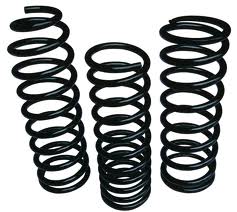 The arch of the foot acts like a shock-absorbing spring. With proper walking or running mechanics, the arch absorbs and releases the impact of each step, preventing damage to the knees and hips. The problem that most people have is that they heel strike, a dysfunctional gait pattern developed due to previous injury or poor shoe selection. When you heel strike, you bypass the natural spring of the arch, and the impact of each step is driven through your heel. This causes an ongoing series of micro traumas directly to the heel — where the plantar fascia attaches — and through the soft tissue of the knee and hip. The repeated stress and strain from each step you take can cause tiny tears in the ligaments and tendons and build restriction in the calf muscles.
The arch of the foot acts like a shock-absorbing spring. With proper walking or running mechanics, the arch absorbs and releases the impact of each step, preventing damage to the knees and hips. The problem that most people have is that they heel strike, a dysfunctional gait pattern developed due to previous injury or poor shoe selection. When you heel strike, you bypass the natural spring of the arch, and the impact of each step is driven through your heel. This causes an ongoing series of micro traumas directly to the heel — where the plantar fascia attaches — and through the soft tissue of the knee and hip. The repeated stress and strain from each step you take can cause tiny tears in the ligaments and tendons and build restriction in the calf muscles.
Overweight individuals are more at risk of developing the condition due to the excess weight impacting on the foot.
There is no one single treatment for plantar fasciitis that works for everybody. I have had great success using a few different treatments together. I see the best results — by far — with deep tissue massage therapy. On average it takes three or four massage sessions for a client to be pain free. When my clients do self-myofascial release, flexibility and corrective exercise, and buy new shoes, they generally are able to get back into the activities they love within a matter of weeks.
If you do not have access to a skilled deep tissue massage therapist, you can utilize the following tools to help bring relief, although it may take a few weeks longer to get to 100%.
Following the directions in the pictures below, place your body weight on the foam roller or ball over taut bands of muscle tissue that need to be released. For the best results, begin near the center of the body and slowly work away from the center of the body.
Relax your body, breathe, and slowly roll through the length of the muscle. Your muscles will naturally tense up, especially when you hit a trigger point. Ease into it and allow yourself to relax.
If you find a painful spot, stop and visualize the soft tissue as melting butter and the foam roller as a hot knife. Allow pressure into the tissue and within 30-60 seconds you will notice a significant reduction in pain. Once the pain reduces (20-30%), move on to the next painful spot and repeat.
Spend between 3-5 minutes on each side. It is very important that you spend an equal amount of time on both sides and that you work through each of the areas listed to gain the most out of self-myofascial release.
Arch
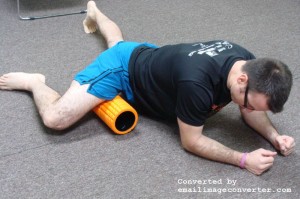
Place roller length-wise to your body. Bend your knee to 90 degrees with your inner thigh on the roller.
Read What Happens to Our Foot When We Wear Traditional Running Shoes by Dr. Nicholas Campitelli to learn more about how shoes change your gait.
Views: 375
Comment
© 2024 Created by ABMP.
Powered by
![]()
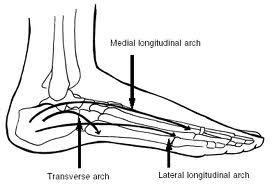
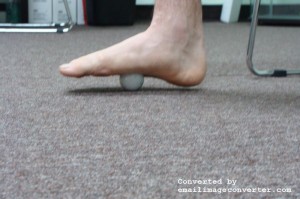
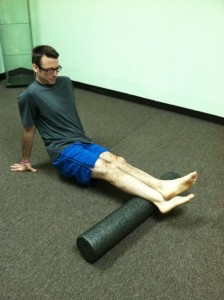
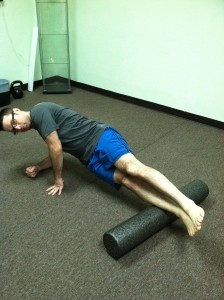
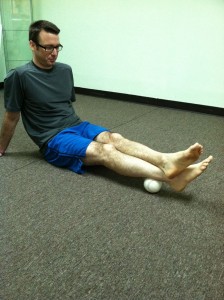
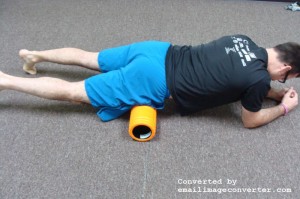
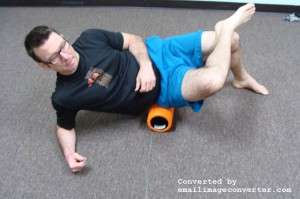
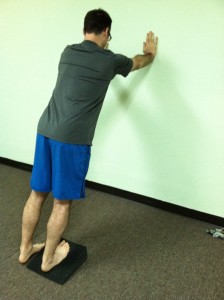
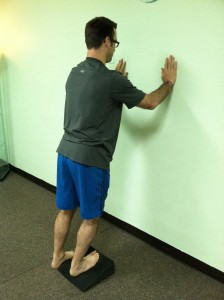
You need to be a member of massage and bodywork professionals to add comments!
Join massage and bodywork professionals